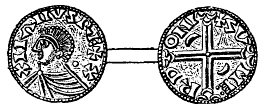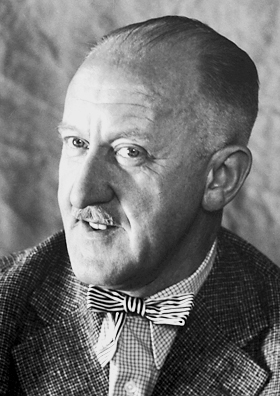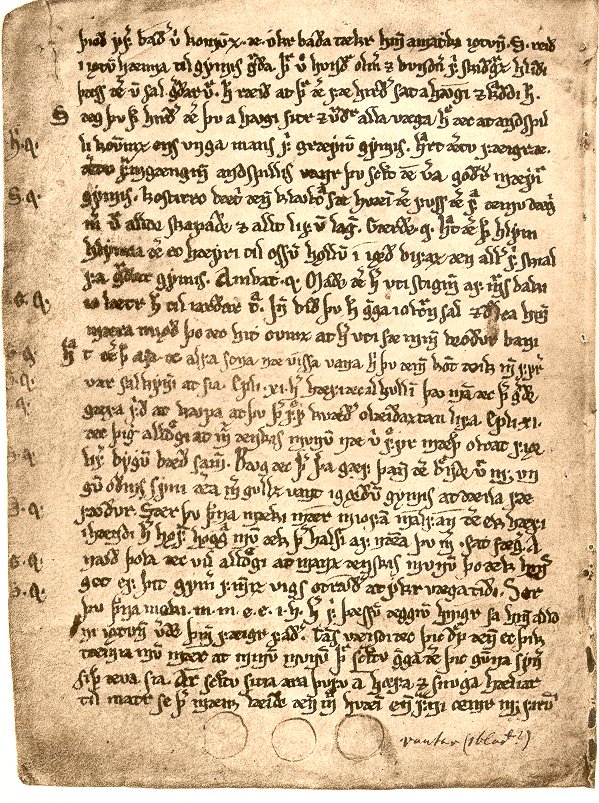|
Arnórr Jarlaskáld
Arnórr Þórðarson jarlaskáld (''Poet of Earls'') (c. 1012 – 1070s) was an Icelandic skald, son of Þórðr Kolbeinsson. Arnórr travelled as a merchant and often visited the Orkney Islands where he composed poems for the Earls, receiving his byname. For king Magnus the Good, he composed ''Hrynhenda''. He also composed memorial poems for Magnus the Good and Haraldr harðráði. He is considered one of the major skalds of the 11th century. See also * List of Icelandic writers * Icelandic literature Icelandic literature refers to literature written in Iceland or by Icelandic people. It is best known for the sagas written in medieval times, starting in the 13th century. As Icelandic and Old Norse are almost the same, and because Icelandic wo ... ReferencesArnórr jarlaskáld : HrynhendaText of the poem with short notes on the poet in Norwegian. {{DEFAULTSORT:Arnorr jarlaskald Icelandic male poets 1010s births 1070s deaths 11th-century Icelandic poets ... [...More Info...] [...Related Items...] OR: [Wikipedia] [Google] [Baidu] |
Skald
A skald, or skáld (Old Norse: , later ; , meaning "poet"), is one of the often named poets who composed skaldic poetry, one of the two kinds of Old Norse poetry, the other being Eddic poetry, which is anonymous. Skaldic poems were traditionally composed on one occasion, sometimes extempore, and include both extended works and single verses ('' lausavísur''). They are characteristically more ornate in form and diction than eddic poems, employing many kennings and heiti, more interlacing of sentence elements, and the complex ''dróttkvætt'' metre. More than 5,500 skaldic verses have survived, preserved in more than 700 manuscripts, including in several sagas and in Snorri Sturluson's ''Prose Edda'', a handbook of skaldic composition that led to a revival of the art. Many of these verses are fragments of originally longer works, and the authorship of many is unknown. The earliest known skald from whom verses survive is Bragi Boddason, known as Bragi the Old, a Norwegian skald of ... [...More Info...] [...Related Items...] OR: [Wikipedia] [Google] [Baidu] |
Þórðr Kolbeinsson
Þórðr Kolbeinsson (''Thordr Kolbeinsson'') was an 11th-century Icelandic skald, or poet. He was the court poet of Eiríkr Hákonarson and some 17 stanzas of his poetry on the earl are preserved in the kings' sagas. The following example is from Eiríkr's campaign in England with Canute the Great Cnut (; ang, Cnut cyning; non, Knútr inn ríki ; or , no, Knut den mektige, sv, Knut den Store. died 12 November 1035), also known as Cnut the Great and Canute, was King of England from 1016, King of Denmark from 1018, and King of Norway .... Þórðr is one of the two main characters of '' Bjarnar saga'', where many '' lausavísur'' are attributed to him. Þórðr's son, Arnórr Þórðarson jarlaskáld, also became a prestigious poet. ReferencesÞórðr KolbeinssonAll extant poetryLaing's translationExtract {{DEFAULTSORT:Thordr Kolbeinsson Viking Age poets Icelandic poets Skalds 11th-century Icelandic poets ... [...More Info...] [...Related Items...] OR: [Wikipedia] [Google] [Baidu] |
Magnus I Of Norway
Magnus Olafsson (Old Norse: ''Magnús Óláfsson''; Norwegian and Danish: ''Magnus Olavsson''; – 25 October 1047), better known as Magnus the Good (Old Norse: ''Magnús góði'', Norwegian and Danish: ''Magnus den gode''), was King of Norway from 1035 and King of Denmark from 1042 until his death in 1047. Magnus was an illegitimate son of King Olaf II of Norway, and fled with his mother Alfhild when his father was dethroned in 1028. He returned to Norway in 1035 and was crowned king at the age of 11. In 1042, he was also crowned king of Denmark. Magnus ruled the two countries until 1047, when he died under unclear circumstances. After his death, his kingdom was split between Harald Hardrada in Norway and Sweyn Estridsson in Denmark. Early life Magnus was an illegitimate son of King Olaf Haraldsson (later St. Olaf), by his English concubine Alfhild,Carl Frederik Bricka, ''Dansk Biografisk Lexikon'', vol. XI aar – Müllner 1897p.44 originally a slave (thrall) of Olaf's q ... [...More Info...] [...Related Items...] OR: [Wikipedia] [Google] [Baidu] |
Harald III Of Norway
Harald Sigurdsson (; – 25 September 1066), also known as Harald III of Norway and given the epithet ''Hardrada'' (; modern no, Hardråde, roughly translated as "stern counsel" or "hard ruler") in the sagas, was King of Norway from 1046 to 1066. Additionally, he unsuccessfully claimed both the Danish throne until 1064 and the English throne in 1066. Before becoming king, Harald had spent around fifteen years in exile as a mercenary and military commander in Kievan Rus' and as a chief of the Varangian Guard in the Byzantine Empire. When he was fifteen years old, in 1030, Harald fought in the Battle of Stiklestad together with his half-brother Olaf Haraldsson (later Saint Olaf). Olaf sought to reclaim the Norwegian throne, which he had lost to the Danish king Cnut the Great two years prior. In the battle, Olaf and Harald were defeated by forces loyal to Cnut, and Harald was forced into exile to Kievan Rus' (the sagas' ). He thereafter spent some time in the army of Grand Pri ... [...More Info...] [...Related Items...] OR: [Wikipedia] [Google] [Baidu] |
List Of Icelandic Writers
Iceland has a rich literary history, which has carried on into the modern period. Some of the best known examples of Icelandic literature are the Sagas of Icelanders. These are prose narratives based on historical events that took place in Iceland and the surrounding areas during the Saga Age. Most of these sagas were recorded during the 13th and 14th centuries, but the original authors and subsequent recorders of the works are unknown and thus not listed here. Although it has been suggested that Snorri Sturluson is the author of ''Egil's Saga''. The Saga tradition is not limited only to Iceland, and is an integral part of Norse mythology throughout the Nordics. Another dominant form of Icelandic literature is poetry. Iceland has a rich history of poets, with many poets listed here. The early poetry of Iceland is Old Norse poetry, which is divided into the anonymous Eddic poetry, and the Skaldic poetry attributed to a series of skalds, who were court poets who lived in the V ... [...More Info...] [...Related Items...] OR: [Wikipedia] [Google] [Baidu] |
Icelandic Literature
Icelandic literature refers to literature written in Iceland or by Icelandic people. It is best known for the sagas written in medieval times, starting in the 13th century. As Icelandic and Old Norse are almost the same, and because Icelandic works constitute most of Old Norse literature, Old Norse literature is often wrongly considered a subset of Icelandic literature. However, works by Norwegians are present in the standard reader ''Sýnisbók íslenzkra bókmennta til miðrar átjándu aldar'', compiled by Sigurður Nordal on the grounds that the language was the same. Early Icelandic literature The medieval Icelandic literature is usually divided into three parts: *Eddic poetry *Sagas *Skaldic poetry The ''Eddas'' There has been some discussion on the probable etymology of the term "Edda". Most say it stems from the Old Norse term ''edda'', which means great-grandmother, but some see a reference to Oddi, a place where Snorri Sturluson Snorri Sturluson ( ; ; 1179 – 22 S ... [...More Info...] [...Related Items...] OR: [Wikipedia] [Google] [Baidu] |
Icelandic Male Poets
Icelandic refers to anything of, from, or related to Iceland and may refer to: * Icelandic people *Icelandic language * Icelandic alphabet *Icelandic cuisine See also * Icelander (other) * Icelandic Airlines, a predecessor of Icelandair * Icelandic horse, a breed of domestic horse * Icelandic sheep The Icelandic is the Icelandic breed of domestic sheep. It belongs to the Northern European Short-tailed group of sheep, and is larger than most breeds in that group. It is thought that it was introduced to Iceland by Vikings in the late nint ..., a breed of domestic sheep * Icelandic Sheepdog, a breed of domestic dog * Icelandic cattle, a breed of cattle * Icelandic chicken, a breed of chicken {{disambig Language and nationality disambiguation pages ... [...More Info...] [...Related Items...] OR: [Wikipedia] [Google] [Baidu] |
1010s Births
1 (one, unit, unity) is a number representing a single or the only entity. 1 is also a numerical digit and represents a single unit of counting or measurement. For example, a line segment of ''unit length'' is a line segment of length 1. In conventions of sign where zero is considered neither positive nor negative, 1 is the first and smallest positive integer. It is also sometimes considered the first of the infinite sequence of natural numbers, followed by 2, although by other definitions 1 is the second natural number, following 0. The fundamental mathematical property of 1 is to be a multiplicative identity, meaning that any number multiplied by 1 equals the same number. Most if not all properties of 1 can be deduced from this. In advanced mathematics, a multiplicative identity is often denoted 1, even if it is not a number. 1 is by convention not considered a prime number; this was not universally accepted until the mid-20th century. Additionally, 1 is the s ... [...More Info...] [...Related Items...] OR: [Wikipedia] [Google] [Baidu] |
1070s Deaths
1 (one, unit, unity) is a number representing a single or the only entity. 1 is also a numerical digit and represents a single unit of counting or measurement. For example, a line segment of ''unit length'' is a line segment of length 1. In conventions of sign where zero is considered neither positive nor negative, 1 is the first and smallest positive integer. It is also sometimes considered the first of the infinite sequence of natural numbers, followed by 2, although by other definitions 1 is the second natural number, following 0. The fundamental mathematical property of 1 is to be a multiplicative identity, meaning that any number multiplied by 1 equals the same number. Most if not all properties of 1 can be deduced from this. In advanced mathematics, a multiplicative identity is often denoted 1, even if it is not a number. 1 is by convention not considered a prime number; this was not universally accepted until the mid-20th century. Additionally, 1 is ... [...More Info...] [...Related Items...] OR: [Wikipedia] [Google] [Baidu] |





